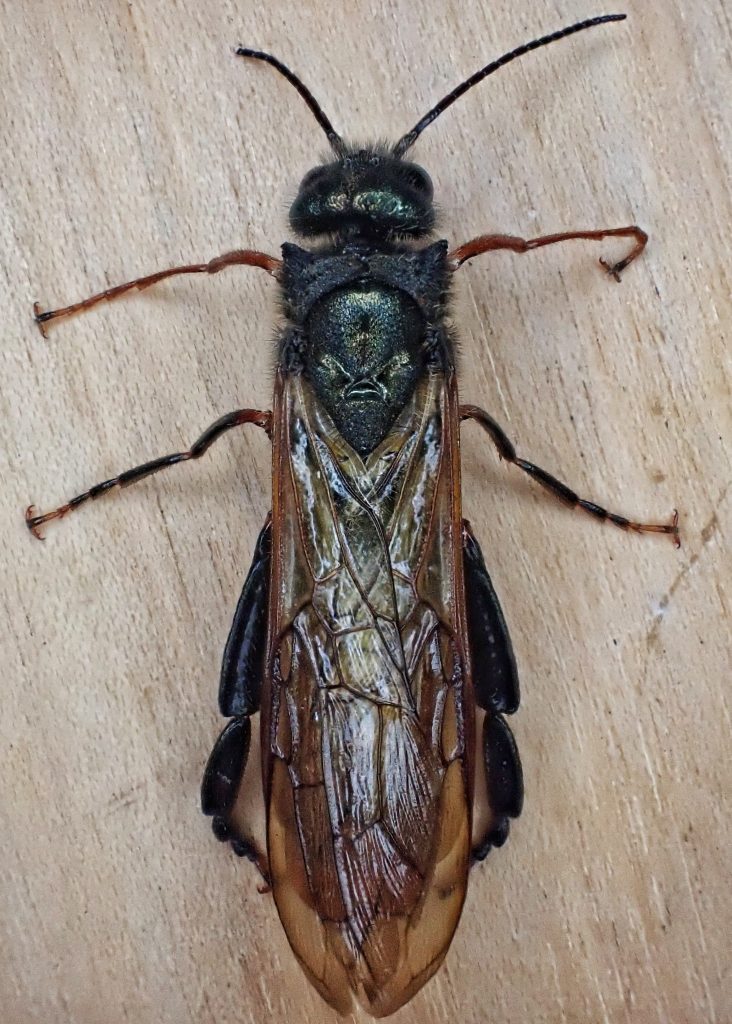
When I first saw this wasp resting on a Western Hemlock (which I might not have even noticed if I wasn’t still somewhat obsessed, or at least habituated, to looking at the foliage of every conifer that I come in view of), I thought it was probably a sphecid wasp, because it was large and had the orange abdomen that I associate with Great Golden Digger Wasps. And, being a male, it lacked the huge, wood boring ovipositor that might have clued me in to it being a wood wasp, although I’m still pretty ignorant when it comes to wasps, and might not have made the connection anyway. But what really got my juices flowing, and made me realize that this was probably a whole new wasp family for me, was when I noticed the 2 points on the front of the pronotum. I knew I’d never seen anything like that before.
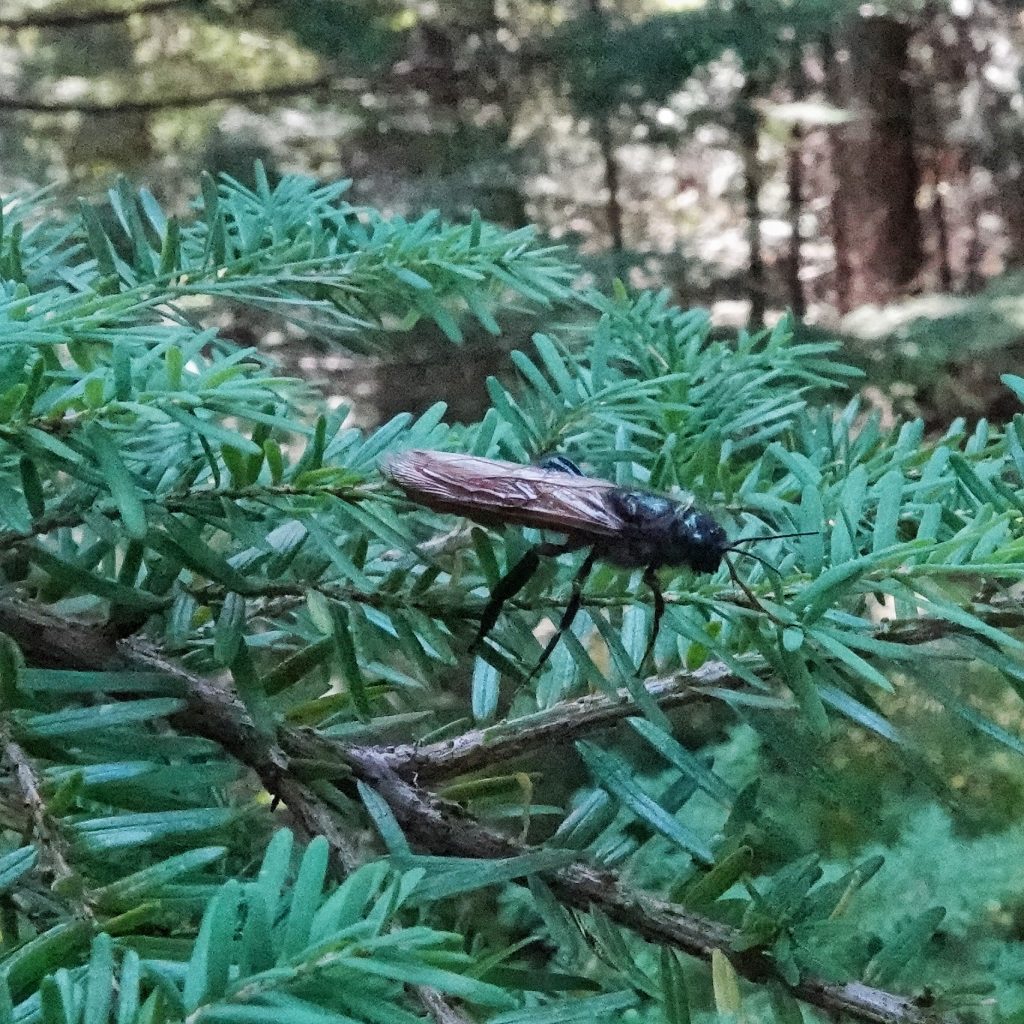
My initial thumbing through ‘Pacific Northwest Insects’ did not reveal an obvious match, but on my second go around I noticed that Merrill Peterson mentions the lack of an obvious ‘wasp waist’, for the sawflies and horntails (the paraphyletic group Symphyta, none of which, btw, can sting-the long, sharp projection from below the abdomen of the female horntails is an ovipositor), and that lack was something I’d noticed during the post refrigeration photo shoot. By then my photos had downloaded to my phone, so I ran a few through the Seek app, which said it was Sirex juvencus. Besides the fact that that is a Eurasian species (the very similar S. californicus has been elevated to full species status, after decades of being considered a subspecies of S. juvencus), the colors of the legs didn’t match my specimen.
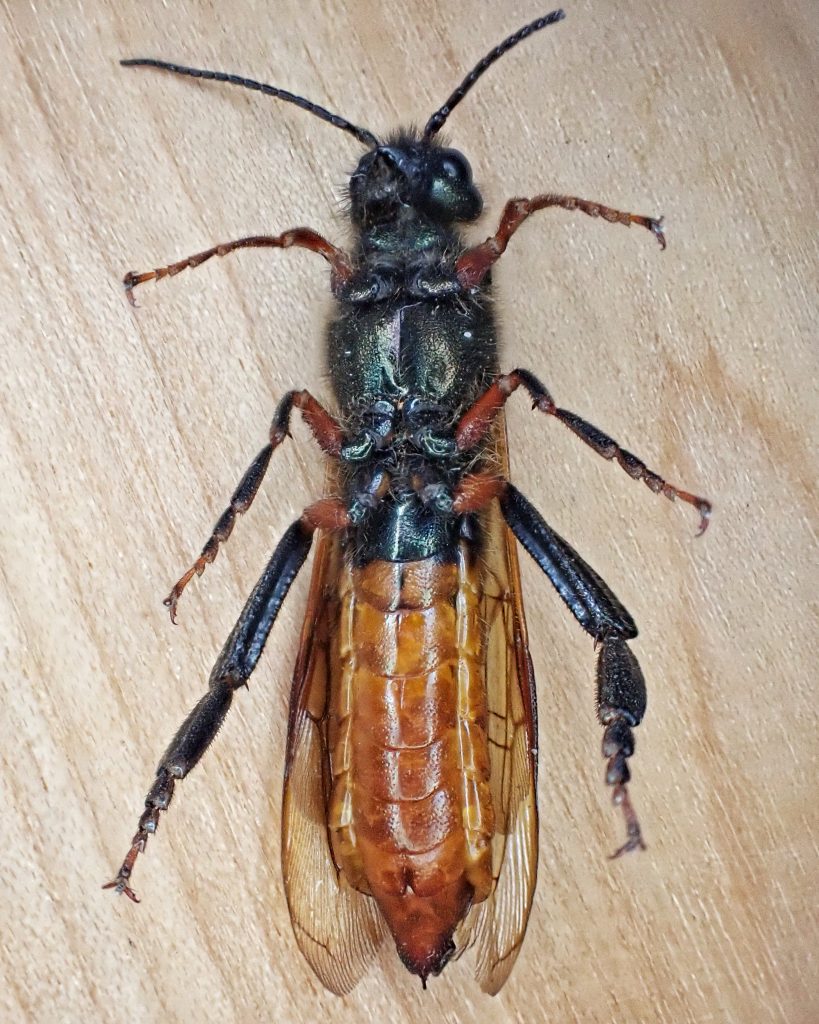
Perusing BugGuide led me to the wonderful resource “Siricidae (Hymenoptera: Symphyta: Siricoidea) of the Western Hemisphere” (Schiff et al. 2012), which has fairly straightforward, interactive keys, with links to illustrations of some of the trickier traits. The one for male Sirex is largely based on leg coloration, but fortunately I can distinguish between reddish brown and black fairly easily, and I was able to confidently key this horntail to Sirex varipes. The site also has a wealth of natural history, (the one for Sirex varipes can be found here) and is the source for much of the (highly abbreviated) technical information in this profile. I strongly recommend that anyone whose interest in wood wasps is piqued by this profile should visit and explore that site.
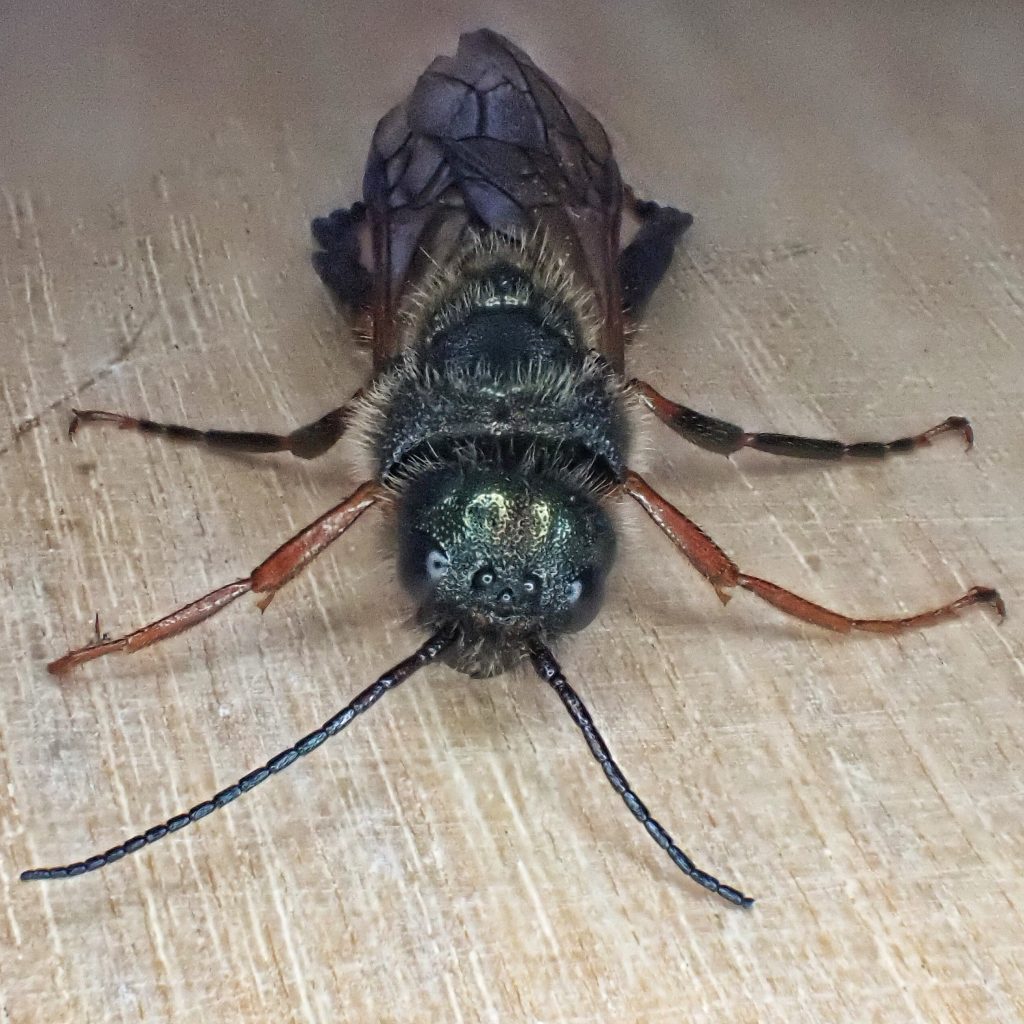
These are fascinating wasps! The females of most siricid wasps (horntails) carry fungus in abdominal glands called mycangia, and Sirex varipes is said to harbor Amylostereum chailletii. They inject this fungus, along with eggs and a phytotoxic mucus, into the wood of weakened, dying or dead trees. The fungus breaks down the cellulose in the wood, and the wasp larvae, which cannot digest cellulose themselves, feed on the fungus and decomposed wood, boring galleries through the wood as they follow the fungus. In the process of consuming the fungus they likely also acquire digestive enzymes that allow them to digest some of the non-decomposed wood they ingest whilst boring their tunnels. The female larvae collect some of the fungus in specialized abdominal pouches, so that they can then inoculate the brood chamber of their offspring. The larvae protect themselves by sealing the tunnels behind them with their frass. When the time for pupation nears they turn sharply back toward the outside surface of the tree, positioning themselves to chew their way free after emergence.
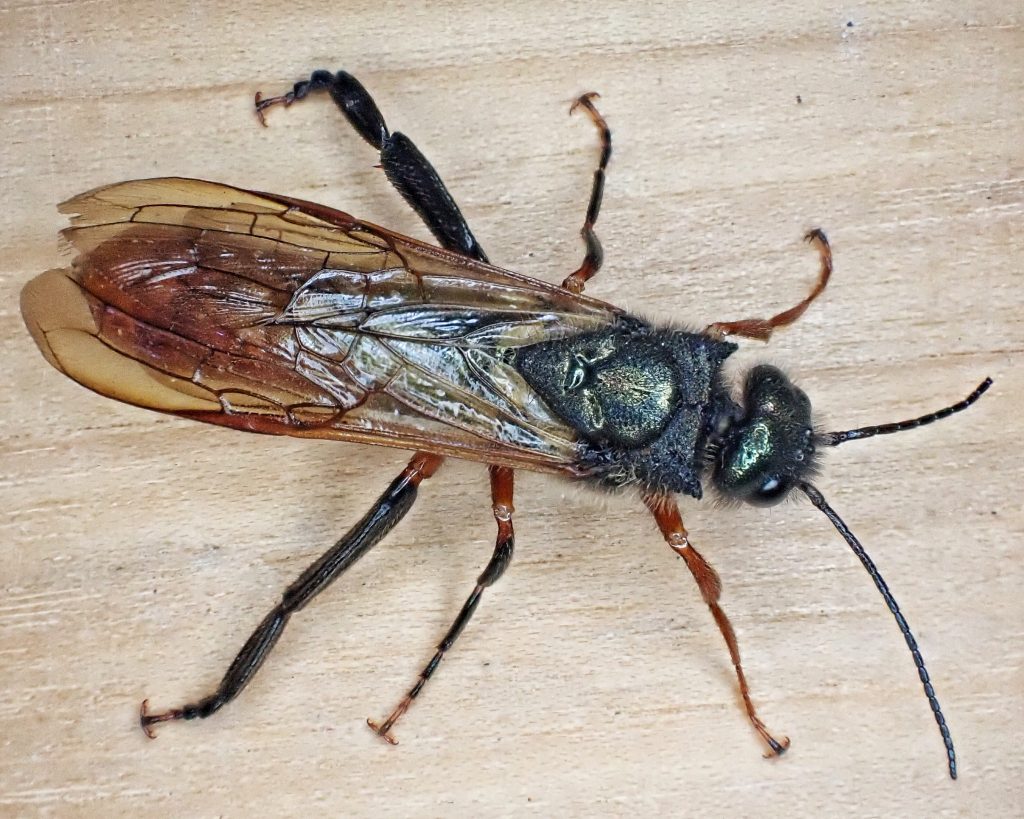
Our native Sirex are not forest pests, since they do not attack healthy trees, and are actually quite beneficial in the decomposition of dead and dying trees, because their galleries allow ingress for fungal decomposers and other wood consuming arthropods. The non-native and invasive Sirex noctilio is a different story. This species is not problematic in its native Eurasia, but in places where it has been accidentally introduced it attacks live trees. And its combination of phytotoxic mucus and the fungus Amylostereum areolatum eventually kills the infected trees. In fact they will sometimes inject only mucus and fungi into a tree, to make it a more suitable future host. Thus far this species has not become established west of the Mississippi River in North America, but, as with all siricid wasps, it’s undetected presence in lumber makes its introduction into additional areas inevitable.
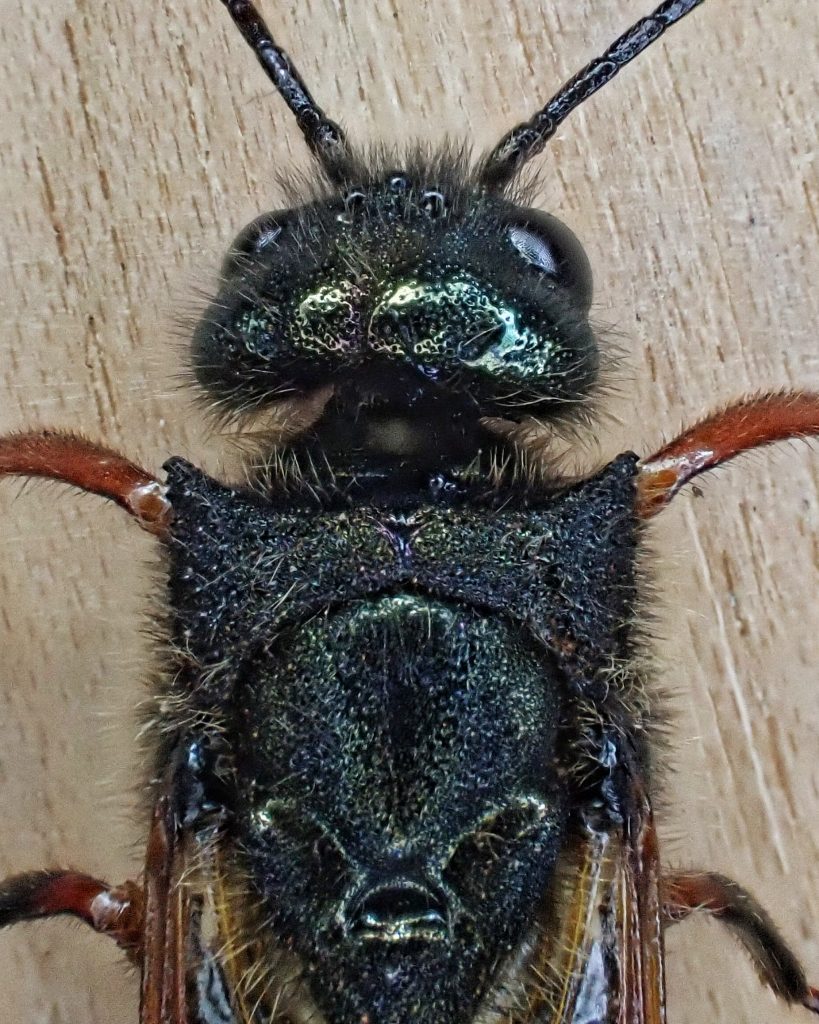
Description-There is tremendous variation in the size of these wasps, regardless of sex, and they can be from 10-23mm long (including ovipositor), with the front of the pronotum projecting into points at the front corners; males have black head and pronotum, and mostly orange abdomen except for the first and last segment; coxae are all black, femora are all reddish brown, rest of front legs all reddish brown, most of the rest of the 2nd and 3rd pair of legs are black; females are all black, except femurs and tarsi reddish brown, and wings clear or light yellowish brown.
Similar species– Separating Sirex sp. require a key, and the insect in hand- there is a straightforward one for males here, and for females here; Urocerus sp. have a white spot behind the eye; Xeris sp. have hind tibia with only 1 spur; all other horn tails have flattened antennae.
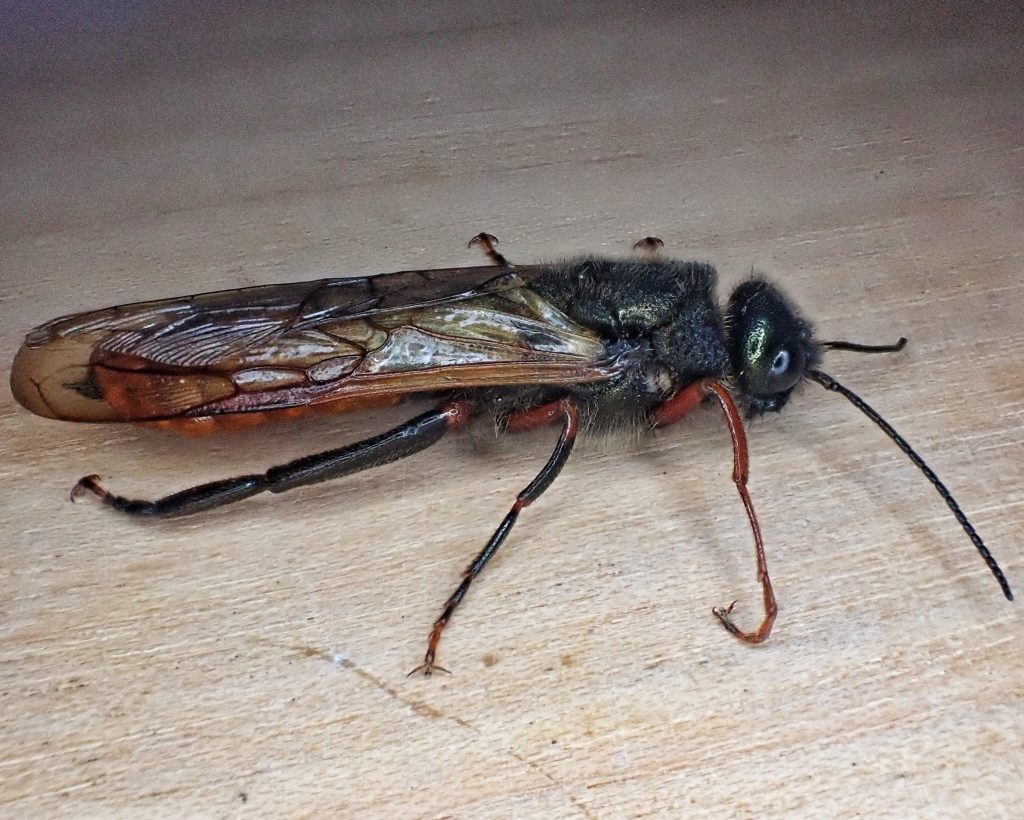
Habitat-Conifer and mixed conifer/deciduous forests, up to subalpine elevations.
Range-Native to western North America, adventive elsewhere in transported wood products; region wide in appropriate habitat.
Adults active-July into October, peak August-September
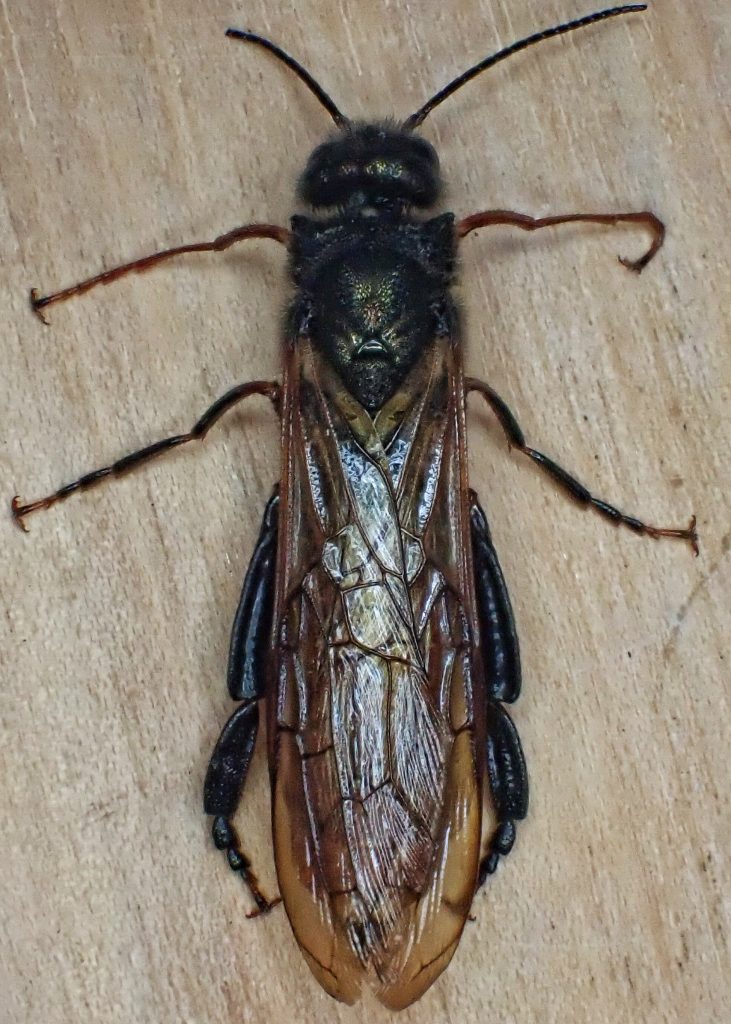
Eats– Larval hosts are conifers in Pinaceae, including Picea engelmannii, Tsuga heterophylla, Pseudotsuga menziesii, Pinus ponderosa, Abies amabilis, A. grandis, and A. lasiocarpa; adults nectar at a variety of flowers
Eaten by-Larvae are parasitized by the crown wasp Schlettererius cinctipes, and wasps in the genera Ibalia, Megarhyssa, Rhyssa (as well as the hyperparasite Pseudorhyssa nigricornis, which parasitizes the parasitoids in Rhyssa); Beddingia sp. nematodes parasitize the larvae; because they do not sting and are fairly large, horntails are preyed upon by many birds, especially when the males form mating leks; woodpeckers manage to capture larvae not deeply ensconced in the wood; other insectivores, particularly dragonflies and spiders, will opportunistically prey upon them.
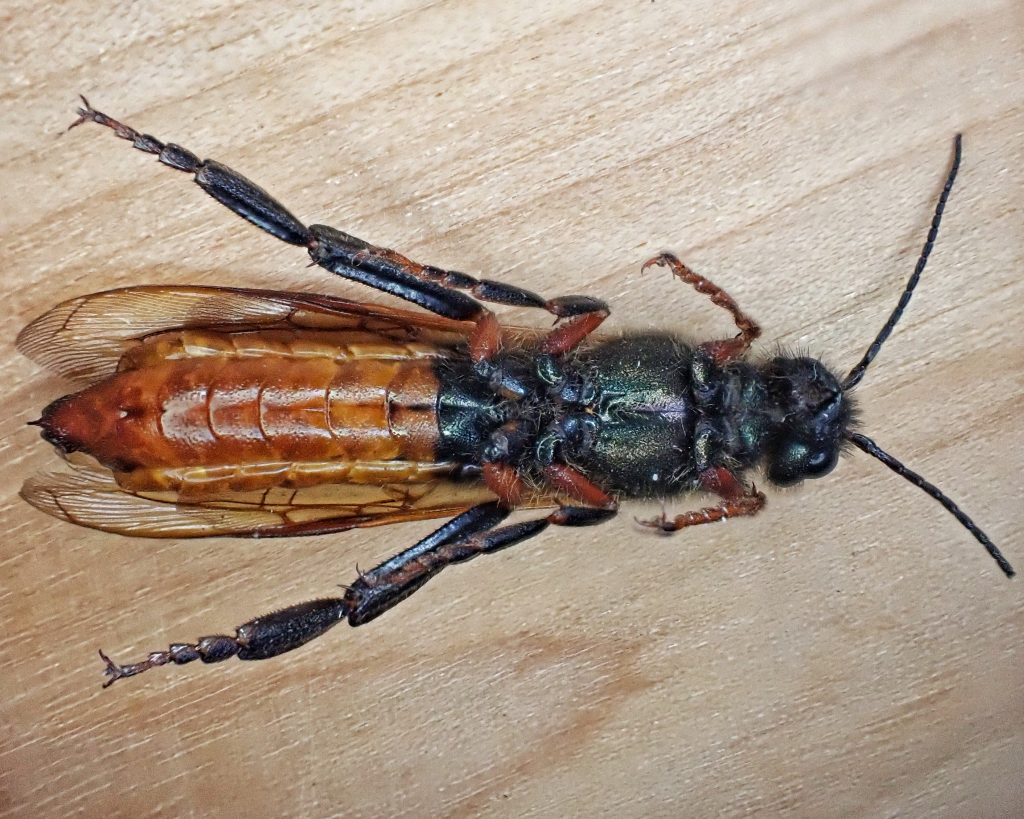
Life cycle– Males usually hatch first and disperse to prevent inbreeding, forming swarms (or leks) around other trees, which emerging females fly into to be bred; females use their stout ovipositor to drill into weakened, dying, or dead trees, and insert eggs, phytotoxic mucus, and Amylostereum chailletii fungi, choosing a location based on moisture content and turgor pressure (pressure within the cells- see this Wikipedia entry for a discussion on the importance of turgor pressure to plant function and growth); the maturation process is not well known for this species, but based on other Sirex it is likely that larvae go through up to a dozen instars, tunnel up to 8” into the tree, and take about a year to mature; adult females live about a week, while adult males live about 2 weeks.
Etymology of names–Sirex is from the Latin for the Sirens, mythical birds with the faces of beautiful women, who lured sailors into danger. In Late Latin it came to be used as a term for wasps. The specific epithet varipes may be from the Latin word for bent, but I cannot confirm that, or ascertain what it may reference.
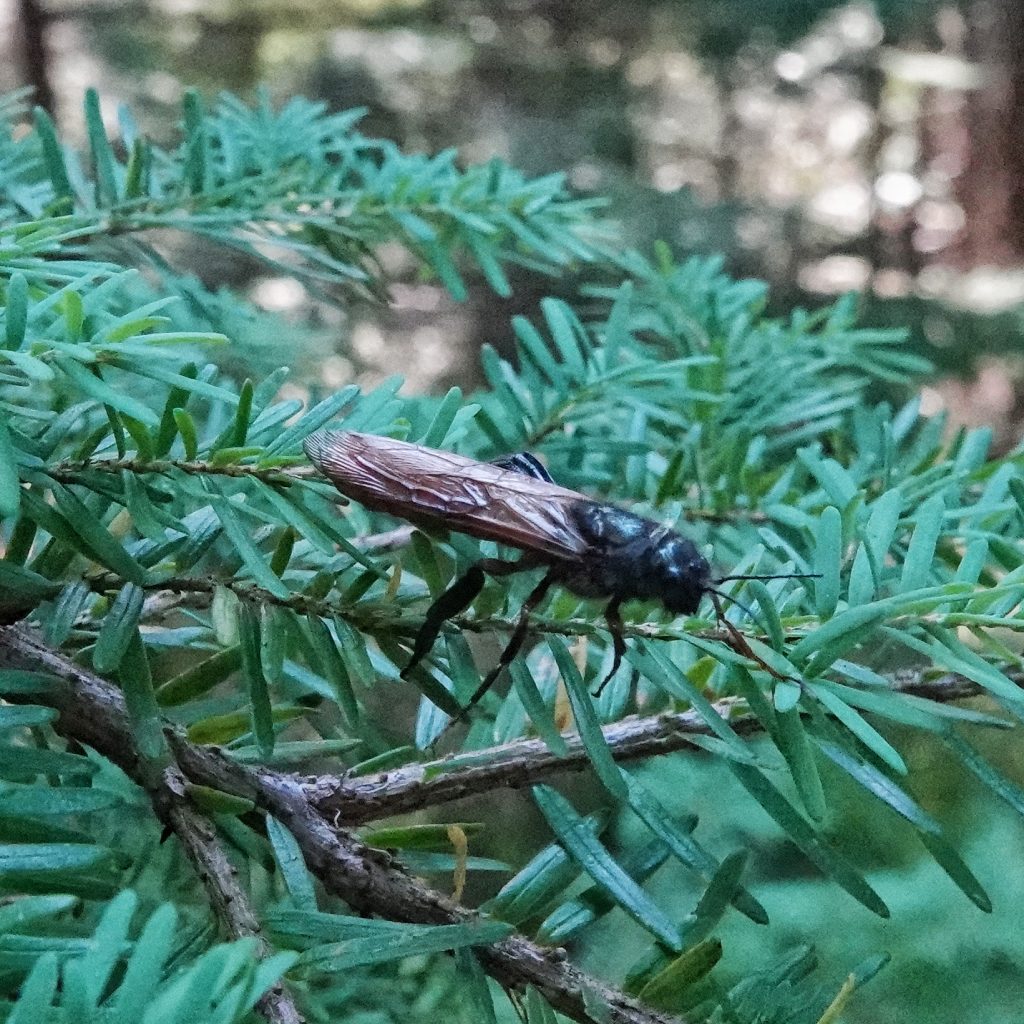
Siricidae of the Western Hemisphere; Schiff, Goulet, Smith et al.; 2012
Siricidae of the Western Hemisphere; Schiff, Goulet, Smith et al.; 2012
Siricidae of the Western Hemisphere; Schiff, Goulet, Smith et al.; 2012
Siricidae of the Western Hemisphere; Schiff, Goulet, Smith et al.; 2012
https://en.wikipedia.org/wiki/Turgor_pressure
Species Sirex varipes – BugGuide.Net
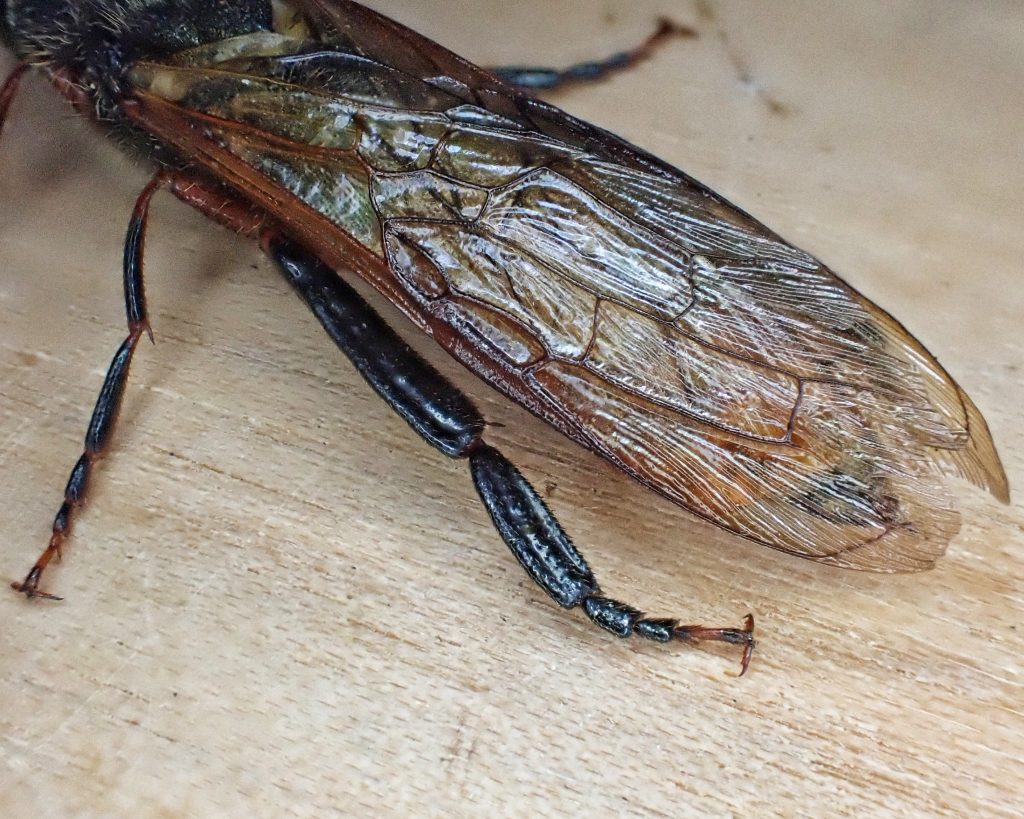
So interesting! Thank you!
They are very cool wasps! Thanks for your appreciation!
Hey there, I think I caught one this evening here in the High Prairie at about 1700 ft altitude above Lyle, WA. It’s huge, a good 2.5 inches. Seems to be a male. Should I let it go? Other advice? It had been hanging out in our little wooden out-building that was once a rabbit hutch but we converted to an art studio, so I wanted to catch it and get it out of there. It had been hanging around for a few days, came out every night in the same spot. (We’ve also removed from the studio rattlesnakes, squirrels, bats, black widows, skunks, it’s been an adventure the past few months.)
I would certainly let it go, Scott! They are not dangerous to humans. But I gotta ask- are you sure it’s 2.5” long? That would be over twice the size of Sirex varipes. To the best of my knowledge we don’t have any wasps that are that big in the PNW.
That’s part of the reason I caught it, was to make a clear ID and measurement. I’m happy to let it go. What’s a good email for you to share some pics?
Nelsondaniel1960@gmail.com would be great. I’d love to see this!